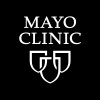
Octreotide in Severe Polycystic Liver Disease
Polycystic KidneyAutosomal Dominant6 moreThis study will evaluate the effect of Octreotide LAR® on the liver volumes of patients with severe polycystic liver disease who are not candidates or decline surgical treatments such as liver cyst fenestration, liver resection or liver transplantation. A total of 42 patients will be recruited -14 who will receive placebo and 28 the study drug. Preliminary evidence indicates that this drug is safe and non-toxic in other disease states. Treatment with this drug holds promise not only for individuals with liver involvement, but also for many more patients with polycystic kidney disease.

S0355 Ixabepilone in Treating Patients With Advanced Solid Tumors or Lymphomas and Liver Dysfunction...
LymphomaSmall Intestine Cancer2 moreRATIONALE: Drugs used in chemotherapy work in different ways to stop tumor cells from dividing so they stop growing or die. PURPOSE: This phase I trial is studying the side effects and best dose of ixabepilone in treating patients with advanced solid tumors or lymphomas and liver dysfunction.

Pegylated Interferon Alfa-2a Maintenance Therapy and Liver Disease Progression in People Infected...
HIV InfectionsHepatitis C1 moreInfection with both HIV and hepatitis C virus (HCV) may result in serious and sometimes fatal liver disease. The purpose of this study was to test the effectiveness of long-term pegylated interferon alfa-2a (PEG-IFN) and ribavirin treatment in slowing liver disease progression in people infected with both HIV and HCV.

Pentoxifylline/Nonalcoholic Steatohepatitis (NASH) Study: The Effect of Pentoxifylline on NASH
Nonalcoholic SteatohepatitisLiver DiseasesThe purpose of this study is to explore the potential benefit of the medication, pentoxifylline, for the treatment of NASH.

Study Comparing Tenofovir Disoproxil Fumarate (TDF), Emtricitabine (FTC)/TDF, and Entecavir (ETV)...
Chronic Hepatitis BThis study was designed to evaluate and compare the safety and tolerability of tenofovir disoproxil fumarate (TDF), emtricitabine (FTC)/TDF, and entecavir (ETV) in the treatment of hepatitis B patients with decompensated liver disease. Safety was assessed by evaluating adverse events (AEs) and laboratory abnormalities. Efficacy was assessed by evaluating reductions in Child-Pugh-Turcotte (CPT) and Model for End Stage Liver Disease (MELD) scores, reductions in hepatitis B virus (HBV) deoxyribonucleic acid (DNA), changes in liver enzymes, development of drug-resistant mutations, and generation of antibody to virus. A maximum randomized treatment duration of 168 weeks was planned. Since subjects with decompensated liver disease were enrolled into this study, it was necessary to provide early intervention strategies if profound viral suppression was not expeditiously achieved. For this reason, subjects with a decrease in plasma HBV DNA from baseline of < 2 log_10 copies/mL and plasma HBV DNA > 10,000 copies/mL (or plasma HBV DNA > 1,000 copies/mL for subjects who entered the study with HBV DNA < 10,000 copies/mL) at Week 8 had the option to start open-label FTC/TDF and continue in the study. Subjects with a virologic breakthrough or who had plasma HBV DNA levels remaining > 400 copies/mL (confirmed) at or after 24 weeks of treatment could have been unblinded at the investigator's discretion for selection of alternative anti-HBV therapy that may have included open-label FTC/TDF. If study drug was permanently discontinued, immediate initiation of another anti-HBV regimen was strongly recommended.

TachoSil Paediatric Liver Trial (TC-019-IN)
Liver DiseasesThe overall objective is to assess the haemostatic efficacy and safety of TachoSil for control of local bleeding in paediatric patients undergoing surgical resection of the liver with our without segmental liver transplantation.

A Study of Zidovudine in HIV-Infected Patients With Liver Disease
HIV InfectionsLiver DiseasesTo examine the pharmacokinetics (blood levels) and bioavailability of zidovudine (AZT) given to patients with HIV infection and chronic liver disease. The specific aim of the study is to provide data permitting the development of guidelines for use of AZT in patients with mild, moderate, or severe liver disease. AZT is the only antiviral agent that has been shown to be effective in patients with severe HIV infection. However, AZT is largely eliminated from the body through a biochemical reaction that takes place in the liver, and it is possible that patients with underlying liver disease may have altered AZT pharmacokinetics and may metabolize AZT differently, with the result that they are susceptible to an increased risk of serious drug toxicity. This study will examine the pharmacokinetics, elimination, and metabolism of AZT in patients with liver disease. Guidelines developed from the data will be helpful in managing AZT treatment of these HIV-infected persons and will indicate whether the dose of AZT administered should be adjusted to compensate for any changes in its bioavailability and/or pharmacokinetics.

Effect of Probiotic and Smectite Gel on NAFLD
Non-Alcoholic Fatty Liver DiseaseFatty Liver3 moreSmectite is a natural silicate clay belonging to the dioctahedral smectite class and has the ability directly to absorb bacterial toxins, bacteria, viruses and bile salts. Diosmectite also has a protective effect against intestinal inflammation hence suppressing production of cytokines such as IL-8 and TNFα. Investigators suggested that all these pharmacological properties may be beneficial for the treatment of NAFLD. Based on preclinical data, in rats with MSG induced obesity supplementation of alive probiotics with smectite gel (Symbiter-Forte) due to his absorbent activity lead to significant reduction of chronic systemic inflammatory markers, lower total NAS (NAFLD activity score) score, with more pronounced reduction of lobular inflammation as compared to administration of probiotic alone. In respect to preclinical data, in this double-blind single center randomized clinical trial (RCT) the efficacy of alive probiotics supplementation with smectite gel (Symbiter-Forte) vs. placebo in type-2 diabetes patient with NAFLD detected on ultrasonography will be studied

An Investigational Study of Experimental Medication BMS-986231 Given in Participants With Different...
Liver DysfunctionLiver Insufficiency5 moreThis is an investigational study of experimental Medication BMS-986231 given to participants with weakened or damaged liver function.

The Effect and Safety of the Four Points Transversus Abdominis Plane Block
Liver DiseasesAdult DiseaseThe anterior abdominal wall from below the xiphoid to infraumbilical area is dominated by the sensory nerves which originate from the anterior rami of the thoracolumbar spinal nerves from T6-L1. The branches nerves from T7-T12 are between aponeurosis internal oblique and transversus abdominal muscle. They can be approached with the ultrasound guidance at subcostal and lateral abdominal wall position. The bilateral transversus abdominis plane (TAP) block has been demonstrated effectiveness and safety in postoperative analgesia to the under abdominal surgery. However, the effect of one to the upper abdominal surgery is unclear. The four points TAP block has been described the first in 2010. The effect of the four points TAP block in postoperative analgesia to the upper abdominal surgery has been reported in recent years. Besides, the effect of thoracic paravertebral block (PVB) in postoperative analgesia to liver resection was also reported. The both techniques have been performing in some studies. The effect and safety of the both techniques have been reported. However, the evidence level is still weak. The investigators need to find a technique, which has effectiveness as well as safety to replace the epidural analgesia, which was confirmed that had many complications, in postoperative analgesia to the hepatectomy. The investigators hypothesized that the four points TAP block under the ultrasound guidance has more effectiveness than the thoracic paravertebral block in postoperative analgesia to the hepatectomy.
